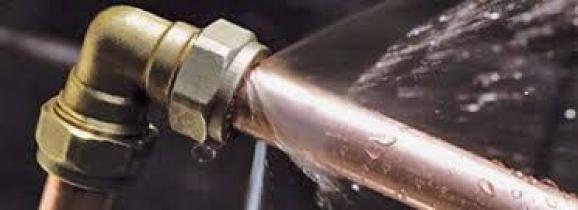Exploring the Primary Reasons for Leakage in The Home
Exploring the Primary Reasons for Leakage in The Home
Blog Article
Are you currently trying to find facts concerning How to detect water leaks in your home?

Leakages not just create waste of water but can also trigger unneeded damages to your house and also promote unwanted natural growth. By recognizing and also looking for day-to-day scenarios that cause leakages, you can shield your residence from future leaks as well as unneeded damages.
Intruding origins
A lot of water leaks start outside your home instead of inside it. If you see an unexpected decrease in water stress, say in your tap, take time to go out and also examine your lawn. You may see damp spots or sinkholes in your lawn, and that might suggest that tree roots are invading water lines triggering water to seep out. You can have your plumber check for intrusion, specifically if you have trees or shrubs near your home.
Rusty water systems
This could be the reason of discoloration or bending on your water pipelines. If our plumbing system is old, think about replacing the pipelines because they are at a greater danger of corrosion than the more recent models.
Malfunctioning Pipe Joints
The point at which your pipes attach is regularly the weakest web link in the waterline. Pipe joints can wear away in time, leading to water leakages. Sadly, the majority of pipeline joints are not conveniently noticeable. If you have noisy pipes that make ticking or banging sounds, specifically when the warm water is activated, your pipeline joints are most likely under a great deal of pressure. It is recommended to have your plumber examine your system annually.
Instant temperature level changes.
Extreme temperature adjustments in our pipelines can trigger them to increase and contract suddenly. This development and tightening might trigger splits in the pipes, especially if the temperature level are below freezing. It would be best if you kept an eye on exactly how your plumbing functions. The visibility of the formerly discussed conditions frequently suggests a high threat.
Poor Water Connectors
At times, a leak can be created by loose tubes as well as pipes that provide your home appliances. In situation of a water connections leak, you might notice water running straight from the supply line or pools around your devices.
Blocked Drains
Blocked drains pipes could be aggravating as well as inconveniencing, but they can often wind up creating an overflow resulting in burst pipes. Maintain removing any type of products that might drop your drains that could clog them to avoid such hassles.
All the above are sources of leaks yet not all water leakages arise from plumbing leaks; some leakages could originate from roof covering leakages. All leakages must be repaired right away to prevent water damage.
Leaks not just trigger waste of water but can likewise create unneeded damage to your house and also promote undesirable natural growth. By looking as well as comprehending for everyday circumstances that trigger leakages, you can safeguard your residence from future leakages and unnecessary damages. Today, we will certainly look at 6 leak creates that might be causing your pipelines to leak.
At times, a leak can be triggered by loosened hose pipes and pipes that provide your appliances. In situation of a water links leakage, you may discover water running straight from the supply line or pools around your devices.
How To Check For Water Leak In Your Home
How To Check for Leaks
The average household's leaks can account for nearly 10,000 gallons of water wasted every year and ten percent of homes have leaks that waste 90 gallons or more per day. Common types of leaks found in the home are worn toilet flappers, dripping faucets, and other leaking valves. These types of leaks are often easy to fix, requiring only a few tools and hardware that can pay for themselves in water savings. Fixing easily corrected household water leaks can save homeowners about 10 percent on their water bills.
To check for leaks in your home, you first need to determine whether you're wasting water and then identify the source of the leak. Here are some tips for finding leaks:
Take a look at your water usage during a colder month, such as January or February. If a family of four exceeds 12,000 gallons per month, there are serious leaks.
Check your water meter before and after a two-hour period when no water is being used. If the meter changes at all, you probably have a leak.
Identify toilet leaks by placing a drop of food coloring in the toilet tank. If any color shows up in the bowl after 10 minutes, you have a leak. (Be sure to flush immediately after the experiment to avoid staining the tank.)
Examine faucet gaskets and pipe fittings for any water on the outside of the pipe to check for surface leaks.
Undetected water leaks can happen without the home or business owner even realizing. If you suspect a water leak, but not able to find the source. It is time to contact a professional water leak detection service, The Leak Doctor.
How To Find a Water Leak In Your Home
https://www.leakdoctor.com/blog/How-To-Check-For-Water-Leak-In-Your-Home_AE197.html

I have been very fascinated by Common Water Leaks In House and I hope you liked my blog post. In case you enjoyed our blog entry if you please remember to pass it around. We truly appreciate reading our article about How to Find Water Leaks.
Immediate relief, just a call. Report this page